- Originally published: June 9, 2022
- Last updated: May 22, 2025
Guide to hybrid leadership
What is hybrid leadership?
Hybrid leadership is how managers and company leaders guide, support, and connect with their teams in a workplace where people split their time between home and the office.
Why is leadership important in a hybrid workplace?
Hybrid leadership is all about making hybrid work… work! When teams are spread out, it’s easy for things to get off track. Some people might feel out of the loop, communication can get tricky, and remote workers might worry they’re being left behind. Hybrid workplace leaders make sure everyone is included, goals are clear, and the team feels like one unit, even if they’re not in the same room.
And it really pays off. Most employees say they’re just as productive (or even more so) when working in a hybrid setup. In fact, 84% of workers feel more productive, and burnout is 15% lower compared to full-time office work. Managers agree, too — 80% say their teams perform better with hybrid work.
Hybrid workforce leadership also helps keep great people around. Many younger workers say they’d leave their jobs if they were forced to be in the office every day. So, offering flexibility (and having leaders who know how to manage it) can make a big difference for any company, yours included.
Hybrid leadership challenges
Leading a hybrid team isn’t always easy, and it comes with a few common bumps in the road, including:
- Keeping everyone in the loop
- Helping remote workers feel included
- Building trust without micromanaging
- Balancing workloads fairly
- Running hybrid meetings
- Supporting wellbeing and avoiding burnout
One of the first challenges is making sure everyone’s in the loop. When people work in different places, it’s easy for some to miss updates or feel left out. Hybrid workplace leaders need to be clear, repeat key messages, and make sure everyone gets the same info.
Another tricky part is making sure remote team members still feel like part of the group. People working from home can miss out on quick chats or decisions made face-to-face in the office, which can make them feel disconnected. That’s why hybrid leaders need to go the extra mile to include everyone in conversations and celebrations.
Trust is also a big deal. Some managers might feel unsure about what their team is doing if they can’t physically see them working. But constantly checking in can feel like micromanaging. A good hybrid leader focuses on results, gives people space, and offers support when it’s needed.
There’s also the issue of workload. Sometimes, people who are in the office more end up doing more tasks just because they’re there. It’s important for leaders to notice this and make sure the work is shared fairly, no matter where someone is working from.
Hybrid meetings can be tough, too. If some people are in the room and others are joining by video, remote folks might feel left out or have a hard time jumping into the conversation. Hybrid workplace leaders need to make sure meetings are set up so that everyone can participate equally.
Then there’s the human side of things. When people work from home, it can be hard to switch off, which can lead to stress or burnout. Great leaders check in not just about work but also about how people are feeling and whether they’re getting enough rest and downtime.
And finally, clear rules really help. If it’s not clear when people should be in the office or what “flexibility” really means, it can cause confusion or frustration. Leaders should set simple, fair hybrid work policies so that expectations are clear for everyone.
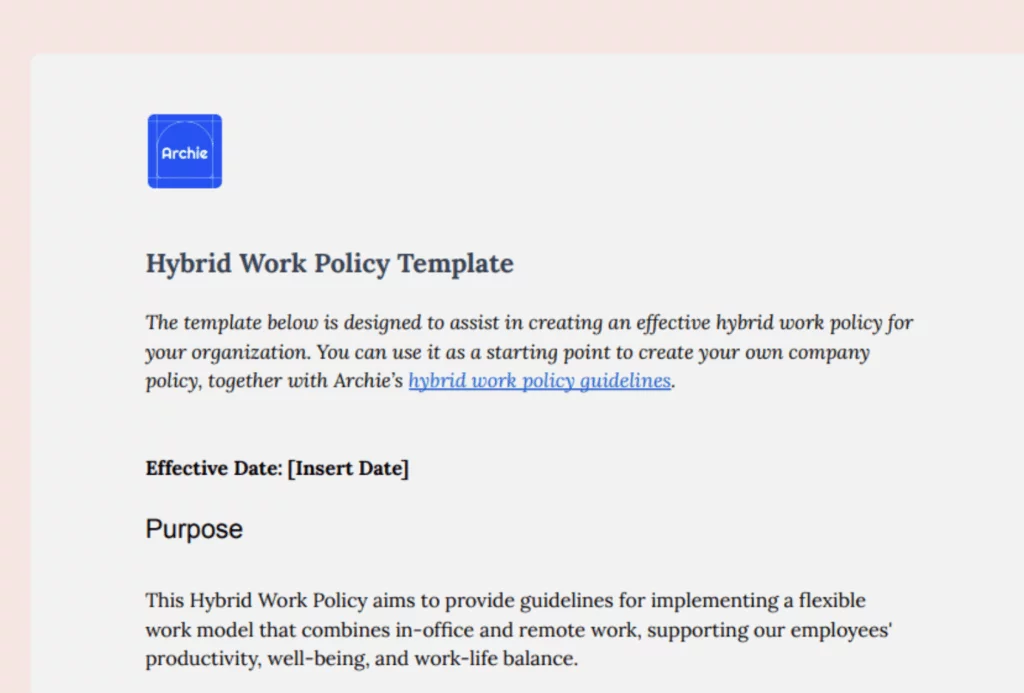
Hybrid leadership skills you need to succeed
As you can guess by now, leading hybrid teams takes a slightly different set of skills than managing folks who are always in the office:
Clear communication
In a hybrid team, not everyone is in the same room — or sometimes even in the same time zone. That’s why communication needs to be extra clear and consistent. Great hybrid leaders don’t assume people “just know” what’s going on. Instead, they make the effort to explain things in simple terms, repeat key updates across channels (like email, Slack, or team calls), and ask for feedback often. Hybrid workplace research shows that hybrid workers with strong communication from managers feel more included and motivated, even when they’re not in the office.
Trust and focus on results
Hybrid leadership means moving away from watching the clock and focusing instead on what actually gets done. When employees are trusted to manage their own time and deliver results, they tend to feel more respected and empowered.
And the numbers back this up. As mentioned, a vast majority of employees say they’re just as productive, or more, when working in a hybrid model, and 80% of managers agree their teams get more done this way. Trust creates a positive loop, when people feel trusted, they rise to the occasion.
Fairness and inclusion
One of the biggest risks in hybrid work is the feeling of being “out of sight, out of mind.” Remote workers can sometimes miss out on spontaneous hallway chats or decisions made on the fly in the office. That’s why good hybrid workplace leaders work hard to make sure everyone is included.
This could mean making sure meetings are always hybrid-friendly, rotating in-person and remote participants for visibility, or using shared tools to keep info transparent. It matters because fully remote workers are 1.3x more likely to feel left out or worry about being passed over for opportunities.
Flexibility and empathy
One of the biggest benefits of hybrid work is flexibility, but that only works when leaders are supportive. Good hybrid leadership means understanding that employees are juggling different things, like childcare, long commutes, or even just needing a quiet space to focus. Being flexible with schedules, offering grace when things come up, and leading hybrid teams with empathy go a long way.
Comfort with technology
Hybrid work runs on tech — think video calls, shared documents, desk booking systems, messaging software, and more. A good hybrid leader doesn’t need to be an IT expert, but they should feel confident using flexible workplace tools that keep the team connected.
It also means making sure the tech works for everyone. About 40% of meetings now include at least one remote participant, so tools need to support both remote and in-person folks equally. When leaders are comfortable with tech, it helps everyone stay in sync and avoid the awkward “can you hear me now?” moments that slow things down.
How to lead a hybrid team
Here’s how to lead a hybrid team in a way that keeps things clear, connected, and running smoothly:
1. Focus on trust, not time at the desk
You won’t always see your team sitting at their desks, and that’s okay! What matters most is that they’re doing good work, not where they’re doing it. Show your team that you trust them to manage their own time and deliver results. When people feel trusted, they tend to give their best (and research backs this up!).
2. Communicate more than you think you need to
In a hybrid setup, it’s easy for people to miss things or feel out of the loop. Share updates often, repeat key messages across different channels (like Slack, email, or team calls), and always leave space for questions. It also helps to set clear expectations — what needs to be done, by when, and who’s doing what. The more your team knows, the more confident and focused they’ll be.
3. Make meetings work for everyone
If some people are in a meeting room and others are joining from home, make sure the setup works for both, and that you actually have a room booked to begin with. Use good video and audio tools, and encourage everyone to speak up, no matter where they’re calling in from.
Try to avoid long meetings when possible, and keep things focused. Some teams find recording key meetings or sending follow-up notes helpful, so no one misses out.
4. Keep the team connected
When people work in different places, it takes a bit more effort to keep the team spirit alive. Encourage regular check-ins, celebrate wins (big or small), and make time for casual chats, just like you would in an office kitchen or hallway.
You could set up a fun Slack channel, run short team games, or have virtual coffee breaks. It doesn’t need to be fancy. It just helps people feel like they’re part of something, even when they’re apart.
5. Be fair and inclusive
Sometimes, remote workers can feel left out, especially if decisions happen in person or important conversations aren’t shared. As a hybrid leader, make sure everyone has the same chance to contribute, whether they’re in the office or not.
Ask for input from quieter team members, rotate in-person and remote meeting leads, and make sure promotions and recognition are based on results, not just office visibility.
6. Check in on people, not just projects
It’s easy to jump straight into tasks and deadlines, but don’t forget to ask how people are doing, not just what they’re doing. A quick “How are you holding up?” in a one-on-one can go a long way. Hybrid work can feel isolating sometimes, so checking in shows you care and helps spot any issues early.
7. Support flexibility, but set boundaries
One of the best things about hybrid work is its flexibility, but too much can feel chaotic. Talk to your team about what hours they’re usually online, how to handle urgent tasks, and what to do if someone needs a quiet work day. Clear guidelines help everyone stay on the same page while still enjoying the freedom hybrid work brings.
8. Get familiar with hybrid office technology
With hybrid office solutions like Archie, you can easily see who’s coming into the office, which desks and meeting rooms are being used, and what days are the busiest. This makes it easier to plan team days, avoid overcrowding, and make sure there’s always enough space for everyone.
It also helps you understand how the office is being used over time, so they can adjust the layout or change schedules if needed. You can even see where teammates are sitting, which makes it easier to plan in-person meetings or team catch-ups.

9. Keep learning and improving
Hybrid work is still new for a lot of teams, so it’s okay to try things, ask for feedback, and make changes as you go. What works for one team might not work for another. Keep checking in with your group and adjusting based on what helps them feel focused, connected, and happy.
Common hybrid leadership models to consider
1. In-office anchored leadership
In this model, the leader works mainly from the office and manages both in-office and remote team members.
🟢 Pros: Great for teams that need regular face-to-face time.
🚧 Challenge: Remote workers might feel less connected if most attention is given to those in the office.
2. Remote-first leadership
The leader works mostly remotely and sets an example that work doesn’t have to happen in the office to be effective.
🟢 Pros: Builds trust with remote team members and promotes flexibility.
🚧 Challenge: May need extra effort to stay visible and connected with office-based staff.
3. Fully hybrid leadership
The leader splits their time between the office and remote work, just like the team.
🟢 Pros: Reflects the hybrid model and helps the leader understand both experiences.
🚧 Challenge: Requires great planning and strong communication to manage time and visibility.
4. Distributed leadership
Leadership in a hybrid workplace is shared among several team members across different locations, rather than being centralized.
🟢 Pros: Encourages collaboration and makes it easier to lead teams spread out across locations or time zones.
🚧 Challenge: Needs clear roles and responsibilities to avoid confusion.
5. Outcome-focused leadership
This model doesn’t focus on where or when people work, but rather on what they deliver.
🟢 Pros: Builds trust and supports flexibility, ideal for teams that are self-driven.
🚧 Challenge: Leaders need to be very clear about expectations, goals, and deadlines.
Each of these models can work well depending on your team, company culture, and office setup. Are you ready to choose the best hybrid work leadership style for you, then?

Berenika Teter
Archie's Content Manager, fueled by filter coffee and a love for remote work. When she’s not writing about coworking spaces and hybrid workplaces, you can probably find her exploring one.
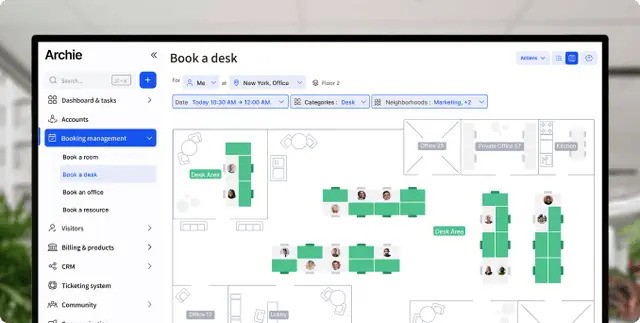
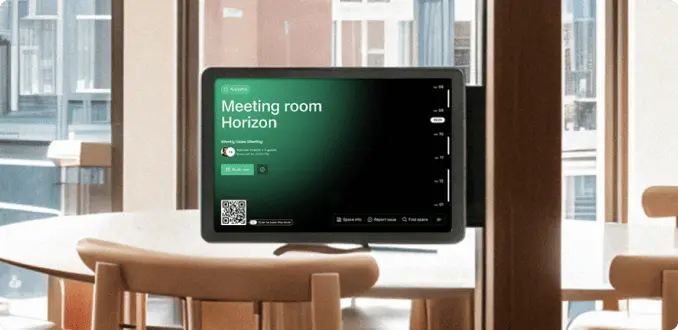




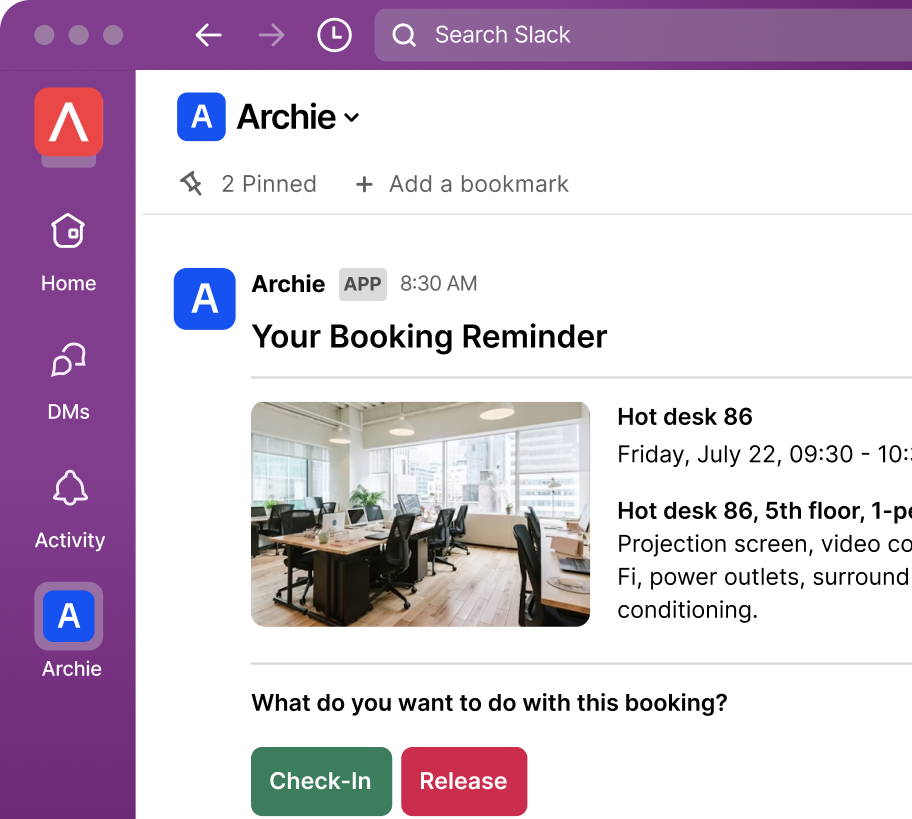



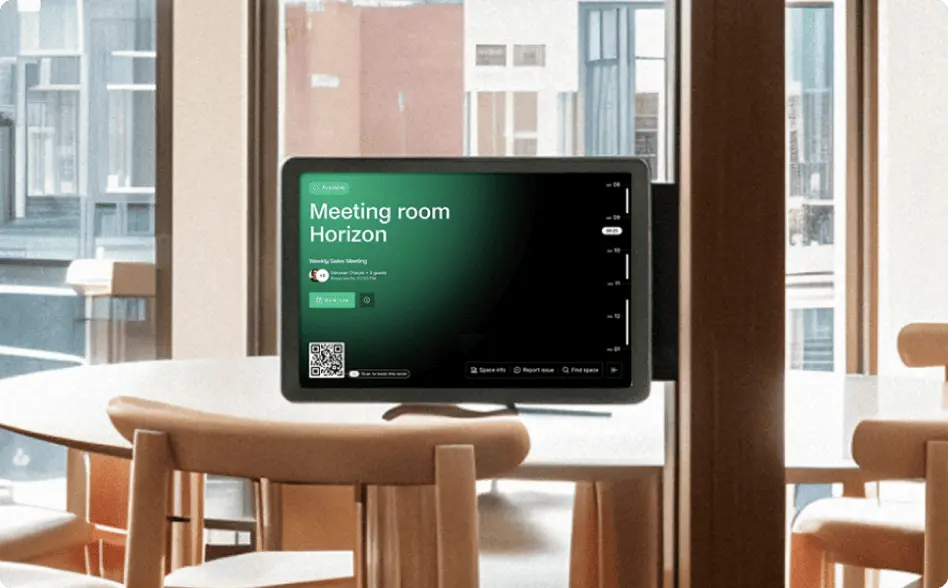
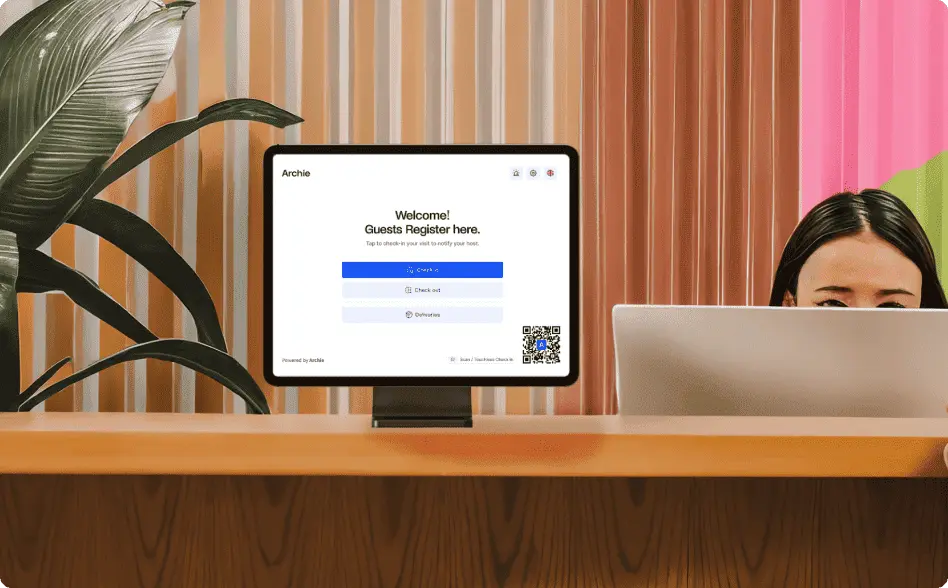
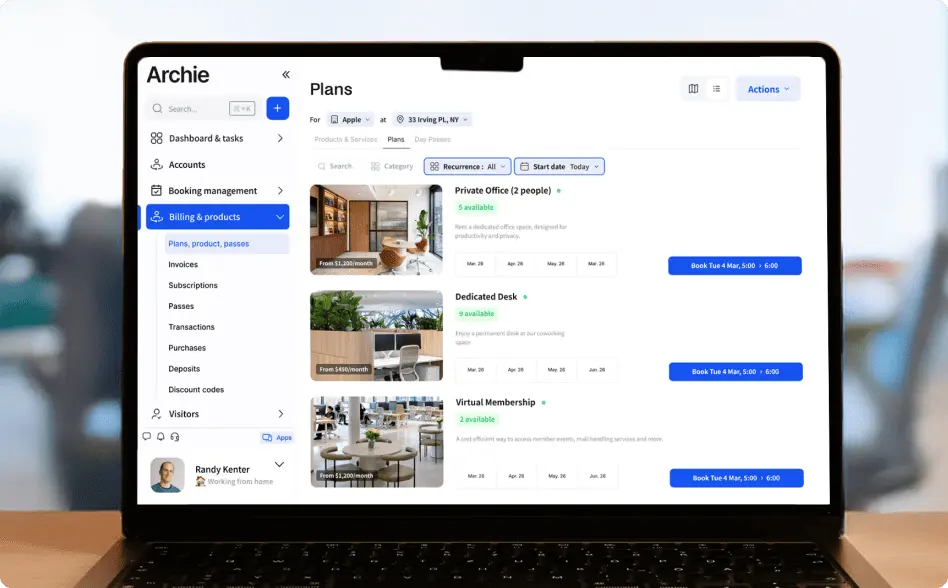





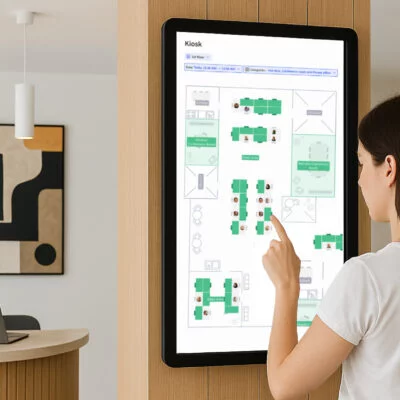
![RTO: Return-To-Office Statistics, Research & Trends [2026] Modern meeting room with large windows, a wooden conference table, pink chairs, and industrial-style ceiling lighting.](https://archieapp.co/blog/wp-content/uploads/2025/04/RTO-statistics-cover-image-400x400.png)
